Global orders for new ships increased by nearly 300%, and the shipbuilding market cycle has turned around.
On September 15, the China Shipbuilding Industry Association announced the economic operation of the shipbuilding industry from January to August 2021, and the three major shipbuilding indicators all increased year-on-year. In particular, in the first eight months, domestic shipyards received 49.11 million DWT orders for new ships, an increase of 227.2%; Shipyards worldwide took on 94.74 million DWT, up 298.1% year on year.
The shipbuilding market is closely related to the shipping market, in fact, both markets have been silent for more than 10 years after 2008. Since the epidemic broke the balance of the global supply chain, since the middle of last year, international freight rates have continued to rise, and shipowners represented by CoSCO Sea Control have earned a lot of money, and COsco Sea Control made a profit of 37.1 billion yuan in the first half of 2021. As the aforementioned data shows, shiboatowners' enthusiasm for new shipbuilding is being ignited, and whether the shipbuilding market can follow up and usher in a cycle reversal has attracted much attention.
Due to the long shipbuilding cycle, new orders have not yet been reflected in the performance of the ship enterprises, and due to the rising steel prices, exchange rate fluctuations and rising labor costs and other factors, the pressure of the ship enterprises is not small. At present, the industry's outlook for the shipbuilding market is unclear, because new ship orders are more from shipowners to cope with the new environmental regulations brought about by the renewal of the demand, rather than the need for fleet expansion; But what is certain is that attention to the shipbuilding market is increasing.

New shipbuilding orders increased by nearly 300% during the year
Cosco Sea Control disclosed a new ship contract on the evening of September 2, the holding subsidiary Orient Overseas and its subsidiaries will respectively order 5 container ships from Nantong Cosco Kawasaki and Dalian Cosco Kawasaki, the agreement is a single ship capacity of 16,000 TEU, the price of each ship is 157.58 million US dollars, the total price of these 10 ships is 1,575.8 million US dollars. About 10.19 billion yuan.
Due to the long construction period of the ship and considering the shipyard schedule and other factors, the above order will not be delivered until at least three years later. Among them, the expected delivery time of Nantong Cosco Kawasaki is between the first quarter of 2025 and the fourth quarter of 2025, and the expected delivery time of Dalian Cosco Kawasaki is between the fourth quarter of 2024 and the fourth quarter of 2025.
Cosco said that the transaction will increase the number of its own vessels and increase the average container capacity per vessel of OOCL and its subsidiaries, and under economies of scale, the cost per container will be reduced with the increase in container capacity per vessel, thus enhancing the operating cost competitiveness of OOCL and its subsidiaries.
Cosco Sea Control is the star company in the current A-share market. Since the middle of last year, the company's stock price has risen nearly 10 times, behind which is the rapid growth of the company's performance. In 2020, CoSCO Sea Control's net profit reached 9.927 billion yuan, an increase of 46.76% over the same period last year.
The booming shipping market and rising freight rates have allowed shipowners to "start business for three years" and plan for capacity expansion. The reporter noted that in March last year, October and July this year, COSCO Sea Control also signed three other shipbuilding agreements, including 12 23,000 TEU container ships, 6 14,092TEU container ships, and 4 16,180TEU container ships. Currently, COsco holds 32 orders for new ships with a total cost of 32.68 billion yuan.
In addition, recently, Evergreen Shipping ordered 24 feeder container ships of three sizes from CSSC Huangpu Wenchong, worth about 1.045 billion US dollars; CSSC Chengxi won the construction order of 3 88,800 tons bulk carriers from Turkish CINER Company; New Ocean Shipbuilding also signed four new 63,000 ton bulk carriers.
Not long ago, Seaspan, the world's largest independent container ship owner, confirmed the execution of alternative orders, spending 3.4 billion yuan to order 5 additional 7,000TEU dual-fuel container ships in Yangzijiang Ship Group. With this order, Yangzijiang Shipbuilding Group this year to 118 orders, a total value of $7.21 billion.
With the announcement of the semi-annual report, the reporter also combed through the A-share major shipbuilding enterprises in the first half of this year to receive orders and complete the situation. Among them, Chinese ships undertook 93 civilian ship orders / 9,644,400 DWT, and completed delivery of 36 civilian ships / 3,274,200 DWT, accounting for 25.22% and 15.65% of the total undertaken and completed in the first half of the country, respectively. According to the company's statement, the current capacity utilization rate is relatively stable, and there is room for improvement; Orders in July and August generally continued to be active in the first half of the year.
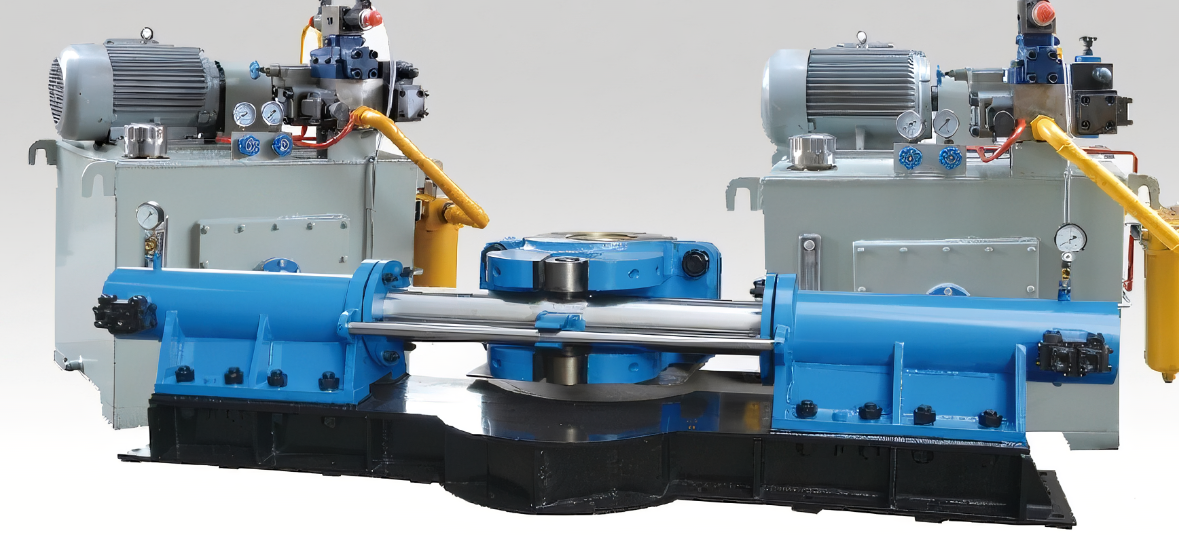
The new orders of China Heavy Industry in the first half of the year were 40.84 billion yuan, an increase of 65.07%, of which, the new orders of private vessels increased by 390%; Completed and delivered 3.9 million deadweight tons of ships, up 8.03% year on year. In the same period, CSSD achieved business orders of 5.721 billion yuan, an increase of 157.82%.
According to the statistics of the China Shipbuilding Industry Association, from January to August this year, the global shipbuilding completion volume and new orders were 59.13 million deadweight tons, 94.74 million deadweight tons, and the hand-held orders at the end of August were 19.665 million deadweight tons, year-on-year, the shipbuilding completion volume declined slightly, and the new orders increased by 298.1%. Hand-held orders at the end of August were up 29.5 per cent.
Among them, China's situation is also more optimistic, in the first eight months of this year, shipbuilding completion, new orders and hand-held orders were 26.26 million deadweight tons, 49.11 million deadweight tons, 91.47 million deadweight tons, an increase of 8.96%, 227.2%, 26% year-on-year in 2020.
Although the three major indicators of the shipbuilding market have risen to varying degrees, there is still a surplus of shipyard capacity. A shipyard person told e company reporter that at present, production capacity will not become a constraint on the company's order and development, the company can organize and coordinate production through reasonable production scheduling, and start construction according to the time agreed on in the contract.
The second-hand and charter markets are active
As mentioned, ship construction takes a long time, and new orders are difficult to replenish capacity immediately, but the market is not waiting for anyone. Taking the data as of September 10, for example, the European route freight level rose 611% year on year, the Mediterranean route rose 561% year on year, and the US-East route rose 159% year on year.
In the face of soaring freight rates, the industry once joked, "300 containers, shipped from China to the United States, a freight can buy a ship." This also led to the second-hand ship market, the report shows that recently, the 2011 construction of 181,000 DWT Capescape FrontierPhoenix ship to 33.75 million US dollars sold; An 82,000 DWT Kamsa Ranger built in 2012 sold for $24 million, and a 38,000 DWT Nicoline built in the same year sold for $20 million.
In addition, the "ship" has also become the object of competition, September 1, a bulk carrier in the Zhejiang shipping market under the "auction ship network" at a high price of 36.03 million US dollars (about 233 million yuan), more than the starting price of 5.85 million US dollars (about 37.85 million yuan), the auction of bulk carriers for international routes, is expected to be delivered in June next year.
A number of shipowners, including Maersk, forecast high freight rates until at least the middle of 2022. In terms of the mentality of buyers of second-hand ships or "ships", this can not only save the time of shipbuilding, but also accurately grasp the market peak and put into operation as early as possible.
Build if you can; buy if you can; rent if you can't; The hot ship leasing market is another side of the current market. On August 11, CDB Leasing's 2021 interim results showed that the company's operating income in the first half of the year was about 10.442 billion yuan, an increase of 8.6%. Net profit was about 1.812 billion yuan, up 46.2% year on year.

According to the statement of CDB Leasing, the main reasons for the growth in performance include the increase in total leased assets due to the increase in investment during the reporting period, and the revenue from ship operating leasing also increased significantly year-on-year. The reporter noted that the bank of China Leasing while building new ships, while buying second-hand ships, expanding the size of the fleet, the first half of the delivery of 13 new ships, 23 second-hand ships.
In addition to banking leasing companies, leasing companies from the manufacturer's department also performed well. China Ship Leasing posted a net profit of 646 million yuan in the first half, up about 28% from a year earlier. The company said that the increase in performance mainly came from three aspects, first, the number of vessels in operation increased to 114 from 84 in the same period last year, second, the average cost of interest-bearing liabilities decreased to about 2.2% from 3.3% in the same period last year, and third, the operating income and profit of the company's self-operated dry bulk fleet increased significantly compared with the same period last year.
"Benefiting from the popularity of the current bulk shipping market, the second-hand and charter markets are also hot." Han Jun, chief analyst of Citic Construction and Investment Transportation, provided data to e company reporters show that as of September this year, the second-hand price index of container ships increased by 162%, the rate of container shipping in August increased by 583%, and ship owners are now required to sign three or even five years of lease contracts.
Han Jun said that since the second half of last year, the rise in ship rentals has not yet reached a turning point, which has also made the freight rate center continue to increase. At the same time, the container ship new build price index increased by only 24% year on year in September 2021, so many shipowners are placing orders in the hope of replacing higher-cost charter vessels with new capacity.
According to the analysis of Everbright Securities, since the second half of last year, the container ship, bulk carrier transport market has significantly improved, the downstream demand for energy-saving and environmentally friendly new ship products continues to rise, ship prices, freight rates rise, good ship leasing industry; It is expected that China's ship leasing companies will further grow on the basis of the subsequent annual investment level of $15 billion.
But as Han Jun said, although the ship leasing market is hot, the two sides of the transaction also have a game. The reporter noted that when COSCO Sea Control signed the latest shipbuilding contract, it said that OOCL and its subsidiaries can benefit from the optimization of the fleet structure and reduce the dependence on the ship leasing market. It can be seen that the shipowner company also hopes to seize the initiative in the case of a better market.
Shipbuilding cycle market is not clear
Since last year, the COVID-19 pandemic has disrupted the balance of the global supply chain, and some cyclical industries have gone into reverse against the backdrop of supply-demand imbalance, with crude oil, coal, steel, nonferrous metals and other bulk markets performing in turns. The shipping market has also changed its decline, and the profitability of the head enterprises has returned to the peak level around 2008.
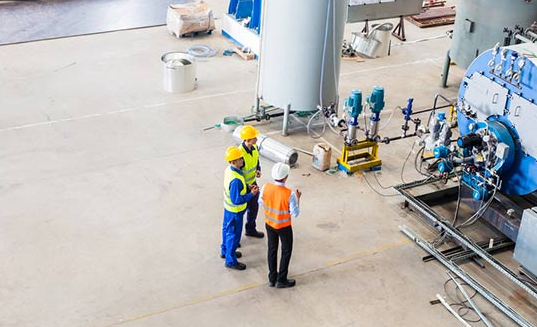
At this time, whether the shipbuilding market, which is closely related to the shipping market, can get rid of the cycle constraint has attracted much attention, in particular, the shipbuilding market has been Mired in the bottom for many years, and the recovery of the three major shipbuilding indicators has given market participants expectations.
Zhang Chao, chief analyst of the military industry of AVIC Securities, said in an interview with e company reporters of the Securities Times that at present, the shipbuilding market has increased the number of new signs and the price of new ships. From January to July, the shipping boom rose, and the global new orders signed increased by 180% year-on-year; The new orders are mainly for container ships, and the price of new ships has increased by about 15%.
Zhang Chao judged that the shipping industry is entering a new round of big cycle, with the recovery of maritime trade after the epidemic, superimposing the old ship type and environmental protection rules on the ship type renewal demand, the shipbuilding industry will usher in a steady increase in orders and prices.
At present, China's shipbuilding capacity utilization monitoring index (CCI) is also in a rebound trend, but has not yet reached a high point, the second quarter of this year, CCI 706 points, an increase of 24.3%, an increase of 8.3%. The shipyard personnel told reporters that in the third quarter of this year, the international shipping market will remain active, and the capacity utilization of backbone shipbuilding enterprises will continue to be at a normal level.
For the current positive changes in the shipbuilding market, Han Jun believes that the order tide this year is generally very restrained, especially for container ships. He is based on the fact that in 2007, the proportion of hand-held orders in the container industry was once as high as 60% of the capacity scale, and the current level of corporate profitability is much higher than in 2007, but the proportion of hand-held orders is only 20%. In addition, he also mentioned that the order driver is not mainly for market share, but for the upgrading and optimization of its own fleet.
Another data shows that shippers hold new ship orders for about 20% of the existing capacity, of which super Panamax ships (15,000 +TEU) accounted for about 60%, new Panamax ships (12,000-14999TEU) accounted for about 20%, the waterfall effect of large ships continues to exist. Han Jun believes that this further shows that the new ship orders mainly come from the demand for ship type structure upgrades.
So, at what point do new ship orders come primarily from expanding demand from shipping companies? In this regard, the judgment of the Korean Army is that the shipbuilding capacity in 2023 and 2024 is basically in a saturated state, and if there are many new ship orders after 2023, it means that more is from the expansion of demand.
The reporter noted that in the description of the stage of the civil ship, China Heavy Industry mentioned that the new shipbuilding market appeared "repair growth", meaning that the shipbuilding market is far from reaching a climax. Zhang Chao added to reporters that the development logic of the shipbuilding industry is around the development trend of global trade volume, with reference to the current global economic development situation, the shipbuilding market will not necessarily usher in a similar cycle in 2007-2008.
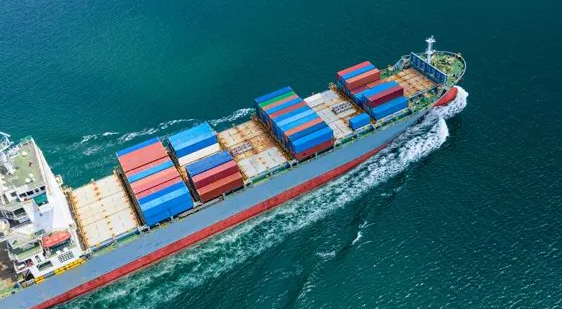
At present, the increase in order volume did not quickly drive the performance of shipbuilding companies to reverse, China Shipbuilding, China Heavy Industry and other listed companies in the first half of the net profit withholding is still in a state of loss. This is related to the order cycle, and the revenue recognized this year may come from orders made two years ago. Among the three main ship types, bulk carriers generally take about 10-12 months from the start to the delivery of the ship, container ships generally take about 12-14 months from the start to the delivery of the ship, and crude oil ships generally take about 10-12 months from the start to the delivery of the ship.
Due to the different transport markets corresponding to the three major ship types, the demand situation of various ship types is also different, at present, the demand of container ships and bulk carriers is better than that of oil tankers.
A shipping industry practitioners told reporters that countries through infrastructure investment to drive economic growth, bringing a large demand for iron ore, coal and other raw materials, with the bulk transport market, in fact, the BDI index has hit a new high in 11 years, at the same time, the supply of bulk carriers is more serious. For the oil market, the market also has expectations - the oil market may enter a high boom next year, when the demand for oil tankers is expected to increase, and the three major ship types may have a resonance effect.
The cost problem restricts the shipyard profit level
For shipbuilders, there are also some risk factors, including the rise in the price of Marine steel, exchange rate fluctuations, and rising labor costs. The data obtained by the reporter show that in the first half of the year, the gross profit margin of China's main ship business was 9.87%, an increase of 1.37 percentage points year-on-year, and the gross profit margin of China Heavy Industry was 7.65%, an increase of 1.9 percentage points year-on-year. As mentioned above, from January to July, the price of new ships rose by about 15%, and the gross profit margin of shipbuilding increased slightly, but the cost inevitably eroded some profits.
Data from the China Shipbuilding Industry Association also show that from January to August, 75 key monitoring ship enterprises achieved main business income of 193.2 billion yuan, an increase of 14.3%, but the total profit was only 990 million yuan, down 14.7%.
Taking South Korean shipbuilding industry data as an example, not long ago, PoSCO and South Korea's three major shipbuilding companies for the second half of this year to increase the sales price of more than 6 mm of shipbuilding thick steel plate ended negotiations, on the price of about 1.1 million won per ton, about 6100 yuan, an increase of about 40% to 60%, and Marine steel in shipbuilding production costs accounted for about 20%.
The shipping industry is highly integrated with the steel industry, and the steel industry is an important part of the supply chain of the shipbuilding industry. At the same time, as the downstream of the steel industry, the shipbuilding industry is a large consumer of the steel industry. The reporter noted that in the face of fluctuations in the price of Marine steel, exchanges between domestic shipping companies and steel companies have also begun to increase.
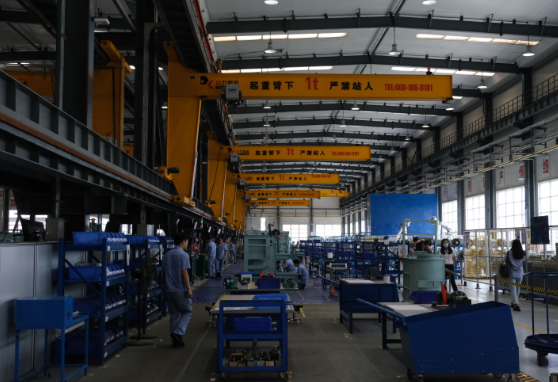
In May this year, the person in charge of COSCO Shipping Heavy Industry visited Xiangsteel and put forward expectations for building a long-term and stable strategic cooperative partnership between the two sides and creating a green, healthy and sustainable industrial chain cooperation model. In September, the person in charge of Nangang Group visited COSCO Shipping Heavy Industry, and the two sides exchanged views on building a safe, mutually beneficial and stable supply chain relationship and jointly coping with market risks.
Last month, Anshan Steel and Bensteel restructuring, the reorganization, China State Shipbuilding Group sent a congratulatory letter to Angang and mentioned that Angang in the price advantage is obvious, the shipyard has made a greater contribution to the cost reduction, Chinese ships from Angang steel annual purchase of more than 1 million tons of steel; After the reorganization of Anben, the two sides will study and launch high-tech, cost-effective Marine steel products, hoping that Ansteel will continue to provide obvious cost advantages, stable, safe, fast and efficient products and services.
"The main factors affecting shipbuilders' profits are upstream raw materials and labor costs." Zhang Chao told reporters that in the first half of the year, the prices of commodities such as iron ore, copper and aluminum rose rapidly, and Marine materials hit a new high in nearly ten years, which affected the profitability of shipyards to a certain extent. Combined with the impact of the new coronavirus epidemic, labor costs have risen, which has a certain impact on ship prices and shipbuilding costs.
Data show that since the beginning of this year, the domestic 6mm shipbuilding plate and 20mm shipbuilding plate prices once reached 7590 yuan/ton and 7120 yuan/ton, up 70.9% and 79.3% year-on-year, and Marine cables once rose to 76900 yuan/ton, up 56.5% year-on-year.
At the investor exchange meeting held recently, China Heavy Industry also highlighted the cost risk. The company said that since the beginning of this year, affected by the sharp rise in the price of raw materials such as steel, the price of Marine steel plate continues to run at a high level, and the production cost of shipbuilding enterprises remains high. The 20mm ship plate has increased by 44% year-on-year, which has brought huge cost pressure to shipbuilders and squeezed profit margins.
In the face of rising steel prices, China Heavy Industry mainly focuses on procurement to reduce costs, in-depth cost engineering and other ways to resolve, including through the centralized procurement platform of bulk materials to strategic cooperation procurement, and strive to reduce procurement costs, through construction cycle management, target cost management, product optimization and upgrading, as far as possible to reduce production costs.
Chi also addressed the issue of the exchange rate, with the yuan appreciating 6.92 percent in 2020 and 1.20 percent as of Sept. 10. Most of the company's shipbuilding contracts are settled in US dollars, and the construction period is long. In the context of the increasing uncertainty of RMB exchange rate fluctuations, it is more difficult to control exchange rate risks.
New environmental protection regulations accelerate changes in shipping and shipbuilding markets
A common challenge for the shipping and shipbuilding markets is the implementation of new IMO environmental regulations. When Evergreen Shipping ordered 24 new vessels to Whampoa, the industry judged that because these new vessels meet the future international carbon emission reduction requirements and international environmental standards, Evergreen Shipping's move is also aimed at laying out for the future low-carbon ship era and increasing the capacity to replace the old.
At present, the industry's measures to deal with the new IMO environmental protection regulations are mainly divided into three kinds, one is the host power limit, that is, the installation of some equipment to limit the host power; The second is to slow down the navigation, reduce the fuel consumption of the ship, in order to meet the carbon emission standards; Third, disassemble and scrap. Either way, it will limit the shipping industry's capacity supply.
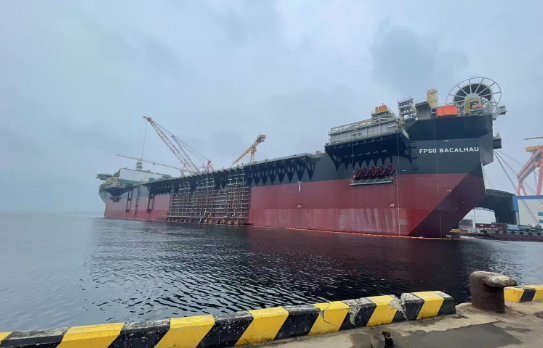
According to the judgment of the Han Army, the current 15 years old ship accounted for 20%, IMO environmental protection regulations will be implemented on January 1, 2023, for the ship age of 18 years and above, basically can not meet the requirements of the new environmental protection regulations, that is, the ship age of more than 15 years now. As a result, shipowner companies have an incentive to update this section of vessels.
Shipbuilders have also launched a response to the new regulations, the person in charge of China Heavy Industry said that the green transformation of the shipbuilding industry gives birth to new opportunities, the demand for new fuel-powered ships such as ammonia, hydrogen and LNG is growing, a new round of technological change such as low-carbon ships and zero-carbon ships has brought industrial opportunities, and the in-depth development of information technology has laid a solid foundation for the development of smart ships.
The person in charge said that China Heavy Industry is highly concerned about the impact of carbon peak and carbon neutrality on the ship-sea market, and actively promotes the research and development and application of new fuel-powered ships such as green ships and zero-carbon ships, and relevant subsidiaries have also carried out the layout, research and application innovation of new fuel equipment such as hydrogen/ammonia. In the future, the company will continue to increase the research and layout of low-carbon emission vessels.
China Shipbuilding revealed that the company's major shareholders have acquired the internationally renowned diesel engine company WinGD in the early years, and the company's affiliated enterprise Hudong Heavy has developed multi-type dual-fuel diesel engines, effectively reducing carbon emissions. At the same time, the company's shipbuilding enterprises have also launched a variety of independent research and development of low-carbon ship types, the amount of undertake continued to improve.
It is worth mentioning that the competition among domestic shipping companies is also very fierce, for example, most of the orders held by COSCO Sea Control are received by associated shipyards. At present, the domestic shipyards mainly include CSSC, the shipyards of COSCO Shipping Group and the private shipyards represented by Yangzijiang.
Regarding the structure of the shipbuilding market, Zhang Chao believes that the orders of China's leading shipyards are basically concentrated in container ships, and the competitive relationship is mainly reflected in the price of new ships and the comprehensive management ability of scheduling, etc. Yangzijiang Shipyard has a strong performance in the comprehensive management ability of scheduling.
Compared with Japan and South Korea, in recent years, the shipbuilding industry to high value-added ship type transformation, South Korea in the gas ship, VLCC ship and other high value-added ship type construction has an absolute advantage; China's competitiveness in container ships is similar to that of South Korea, and it has a clear advantage in bulk carriers. Japan is mainly based on bulk carriers.
This year, the plan of forming the two ships into China State Shipbuilding Group has completed anti-monopoly review in major countries, and the reorganization of the two ships has entered a substantive stage. According to Zhang Chao, combined with the current industry trend of the global shipbuilding industry, the merger of the two ships will help China's shipyards maintain a strong competitiveness in the global market. "Consolidation will eliminate some duplicate competition, there will be a synergy in R&D and technical capabilities, and in the civilian ship market, consolidation will steadily improve the quality and quantity of shipbuilding."
- EMERSON
- Honeywell
- CTI
- Rolls-Royce
- General Electric
- Woodward
- Yaskawa
- xYCOM
- Motorola
- Siemens
- Rockwell
- ABB
- B&R
- HIMA
- Construction site
- electricity
- Automobile market
- PLC
- DCS
- Motor drivers
- VSD
- Implications
- cement
- CO2
- CEM
- methane
- Artificial intelligence
- Titanic
- Solar energy
- Hydrogen fuel cell
- Hydrogen and fuel cells
- Hydrogen and oxygen fuel cells
- tyre
- Chemical fiber
- dynamo
- corpuscle
- Pulp and paper
- printing
- fossil
- FANUC
- Food and beverage
- Life science
- Sewage treatment
- Personal care
- electricity
- boats
- infrastructure
- Automobile industry
- metallurgy
- Nuclear power generation
- Geothermal power generation
- Water and wastewater
- Infrastructure construction
- Mine hazard
- steel
- papermaking
- Natural gas industry
- Infrastructure construction
- Power and energy
- Rubber and plastic
- Renewable energy
- pharmacy
- mining
- Plastic industry
- Schneider
- Kongsberg
- NI
- Wind energy
- International petroleum
- International new energy network
- gas
- WATLOW
- ProSoft
- SEW
- wind
- ADVANCED
- Reliance
- YOKOGAWA
- TRICONEX
- FOXBORO
- METSO
- MAN
- Advantest
- ADVANCED
- ALSTOM
- Control Wave
- AB
- AMAT
- STUDER
- KONGSBERG
- MOTOROLA
- DANAHER MOTION
- Bently
- Galil
- EATON
- MOLEX
- Triconex
- DEIF
- B&W
- ZYGO
- Aerotech
- DANFOSS
- KOLLMORGEN
- Beijer
- Endress+Hauser
- MOOG
- KB
- Moxa
- Rexroth


Email:wang@kongjiangauto.com

















































































































